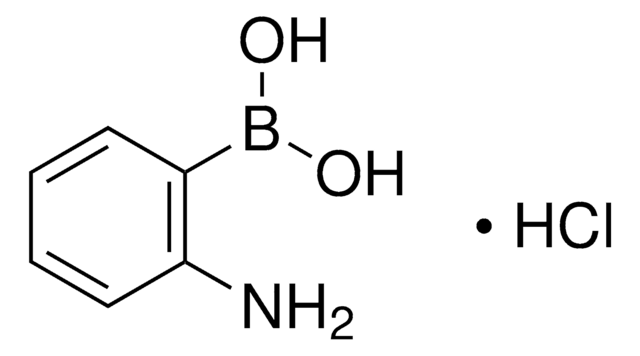Wichtige Dokumente
C7923
Monoclonal Anti-CD44 antibody produced in mouse
clone A3D8, purified immunoglobulin, buffered aqueous solution
Synonym(e):
Anti-CDW44, Anti-CSPG8, Anti-ECMR-III, Anti-HCELL, Anti-HUTCH-I, Anti-IN, Anti-LHR, Anti-MC56, Anti-MDU2, Anti-MDU3, Anti-MIC4, Anti-Pgp1
About This Item
Empfohlene Produkte
Biologische Quelle
mouse
Konjugat
unconjugated
Antikörperform
purified immunoglobulin
Antikörper-Produkttyp
primary antibodies
Klon
A3D8, monoclonal
Form
buffered aqueous solution
Mol-Gew.
antigen 80-95 kDa
Speziesreaktivität
human
Methode(n)
flow cytometry: 5 μL using 1 × 106 cells
Isotyp
IgG1
UniProt-Hinterlegungsnummer
Versandbedingung
wet ice
Lagertemp.
2-8°C
Posttranslationale Modifikation Target
unmodified
Angaben zum Gen
human ... CD44(960)
Allgemeine Beschreibung
Spezifität
5th Workshop: code no. BP406, S320
Immunogen
Anwendung
Flow cytometry/Cell sorting (1 paper)
Anti CD44 monoclonal antibody was used for:
- immunostaining of nonpapillary carcinoma fine-needle aspiration (FNA) or surgical excision specimen.
- flow cytometry analysis to assess breast CSCs in human MCF-7/Dox breast cancer cells.
- staining of CD44 in immunohistochemistry analysis.
- incubation of osteoclasts (OCs) in a study to analyze the molecular composition and F-actin organization of the OC podosome belts.
- It is also suitable for western blot at a dilution of 1:500-1:2,000
Biochem./physiol. Wirkung
Zielbeschreibung
Physikalische Form
Lagerung und Haltbarkeit
Haftungsausschluss
Sie haben nicht das passende Produkt gefunden?
Probieren Sie unser Produkt-Auswahlhilfe. aus.
Lagerklassenschlüssel
10 - Combustible liquids
WGK
nwg
Flammpunkt (°F)
Not applicable
Flammpunkt (°C)
Not applicable
Analysenzertifikate (COA)
Suchen Sie nach Analysenzertifikate (COA), indem Sie die Lot-/Chargennummer des Produkts eingeben. Lot- und Chargennummern sind auf dem Produktetikett hinter den Wörtern ‘Lot’ oder ‘Batch’ (Lot oder Charge) zu finden.
Besitzen Sie dieses Produkt bereits?
In der Dokumentenbibliothek finden Sie die Dokumentation zu den Produkten, die Sie kürzlich erworben haben.
Artikel
Cancer stem cell media, spheroid plates and cancer stem cell markers to culture and characterize CSC populations.
Unser Team von Wissenschaftlern verfügt über Erfahrung in allen Forschungsbereichen einschließlich Life Science, Materialwissenschaften, chemischer Synthese, Chromatographie, Analytik und vielen mehr..
Setzen Sie sich mit dem technischen Dienst in Verbindung.